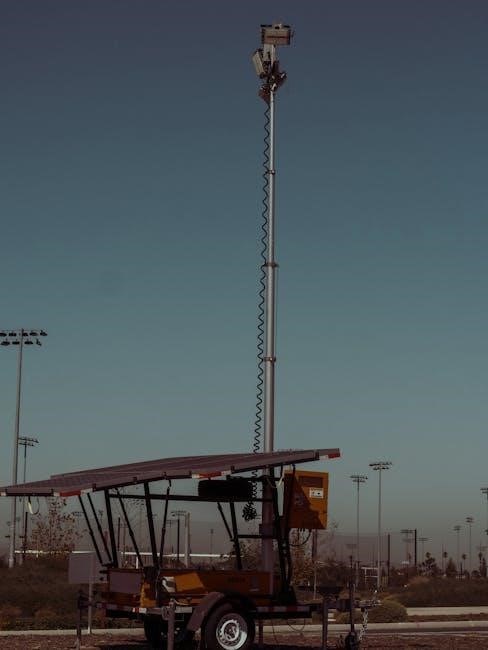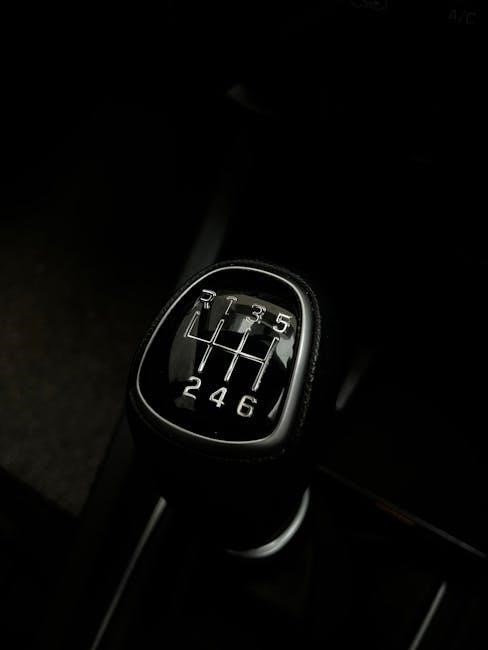Viper Remote Start on Manual Transmissions: A Comprehensive Guide
This guide offers an extensive overview of Viper remote start systems within manual transmission vehicles. We will explore the complexities, safety measures, compatible models, and installation processes. Understand the vital aspects for a safe and functional setup, considering professional input or DIY approaches.
Understanding the Challenges of Manual Transmission Remote Starts
Installing a remote starter on a manual transmission vehicle presents unique challenges compared to automatic ones. A primary concern is safety, as a manual car can be left in gear, leading to unexpected movement upon remote start. This poses a significant risk of accidents and property damage, potentially causing the vehicle to lurch forward.
Manufacturers like Viper address this with a “Manual Transmission Start (MTS)” routine, a safety precaution requiring specific steps to ensure the car is in neutral before remote activation. This routine often involves setting the parking brake, shifting to neutral, and a sequence to confirm the car’s state.
Bypassing the neutral safety switch is another challenge, demanding careful wiring to prevent starting while in gear. Proper installation is crucial, and errors can lead to the system failing or, worse, dangerous situations. Many shops avoid manual installations due to these complexities and potential liabilities. The system relies heavily on the driver correctly following the MTS routine to avoid mishaps.
Essential Safety Precautions for Manual Transmission Remote Starters
Prioritizing safety is paramount when using remote starters on manual transmission vehicles. Always ensure the vehicle is parked on a level surface before engaging the remote start sequence. This minimizes the risk of unintended movement, even if the parking brake fails. Double-check that no one is in front or behind the car before initiating the remote start;
A properly functioning parking brake is non-negotiable. Regularly inspect and maintain the parking brake to guarantee its effectiveness in holding the vehicle securely. Never bypass or disable the neutral safety switch; it’s a critical safety feature.
Adhere strictly to the Manual Transmission Start (MTS) routine outlined by Viper. This routine is designed to confirm the car is in neutral before remote activation. When testing the installation or demonstrating the system, always remote start the vehicle in neutral, on a flat surface, with the parking brake fully engaged. Educate all drivers on the correct operation of the remote start system and the importance of following safety protocols.
The Manual Transmission Start (MTS) Routine: How it Works
The Manual Transmission Start (MTS) routine is a vital safety feature integrated into Viper remote start systems for manual vehicles. It ensures the car is safely left in neutral before enabling remote start functionality. The process typically begins with the driver parking the vehicle and engaging the parking brake firmly.
While the engine is still running, the driver must press and hold a designated button on the remote or key fob. This initiates the MTS sequence. The system then verifies that the parking brake is engaged. Next, the driver removes the key from the ignition. The engine will continue to run, confirming the system is in “remote start ready” mode.
Finally, upon exiting the vehicle and closing the door, the engine shuts off. This completes the MTS routine. The system is now armed, and the vehicle can be remotely started. If any step in the MTS routine is not properly executed, the remote start will be disabled, preventing accidental starts while in gear. Proper execution of the MTS routine is required each time before remote start can be used.
Viper Remote Start Models Compatible with Manual Transmissions

Viper offers a range of remote start systems compatible with manual transmissions, each designed with specific features and capabilities. The Viper 5706V is a popular choice, known for its two-way communication, extended range, and security features. It allows users to confirm successful remote starts and receive alerts for any triggered alarms.
Another option is the Viper 5901, which offers similar features to the 5706V and includes keyless entry. It can be integrated with the vehicle’s neutral safety switch, adding an extra layer of protection against accidental starts while in gear. The Viper 4105V is a more basic, one-way system suitable for users seeking essential remote start functionality without advanced features.
When selecting a Viper remote start model for a manual transmission, it is essential to verify compatibility with the specific vehicle and ensure the system can be properly programmed for manual transmission mode. This often involves consulting with a professional installer to ensure correct wiring and programming of the system.
Installation Considerations: Wiring the Neutral Safety Switch Override
Installing a remote start system on a manual transmission vehicle requires careful attention to the neutral safety switch override. This override is crucial to ensure the vehicle only starts when in neutral, preventing potential accidents. The neutral safety switch, typically found on automatic transmissions, must be bypassed or emulated in manual transmission vehicles.
Wiring the override involves connecting the remote start system to a relay that mimics the functionality of the neutral safety switch. This relay prevents the starter from engaging unless the system is properly armed through the manual transmission start (MTS) routine. Incorrect wiring can lead to hazardous situations, such as the car starting in gear.
Professional installation is highly recommended due to the complexity of the wiring and programming required. A skilled installer can ensure the neutral safety switch override is correctly implemented, providing a safe and reliable remote start system. Proper grounding and secure connections are essential to prevent malfunctions.
Step-by-Step Guide to Installing a Viper Remote Start on a Manual Transmission Vehicle

Installing a Viper remote start system on a manual transmission vehicle demands meticulous attention to detail. First, gather all necessary tools: wiring harness, wire strippers, crimpers, multimeter, and the Viper remote start kit. Begin by disconnecting the negative battery terminal to prevent electrical shorts.
Next, identify the vehicle’s wiring diagram and locate the ignition, starter, and parking light wires. Connect the Viper system’s corresponding wires, ensuring secure and insulated connections. The most critical step is wiring the neutral safety switch override, which prevents starting in gear. This often involves a relay connected to the parking brake or a neutral position sensor.
Carefully route all wires away from moving parts and secure them with zip ties. Once wiring is complete, reconnect the battery and test the system. Follow the Viper’s programming instructions to enable manual transmission mode. Verify the remote start only functions when the parking brake is engaged and the gear is in neutral. If issues arise, consult the troubleshooting section of the manual or seek professional assistance.
Programming the Viper System for Manual Transmission Mode
After the physical installation of your Viper remote start system, programming it for manual transmission mode is crucial for safety and functionality. This process typically involves accessing the system’s programming menu using the remote control and the control center button, based on the specific Viper model.
Consult your Viper installation manual for the precise sequence of button presses required to enter programming mode. Once in the menu, navigate to the “Transmission Mode” setting. The default setting is often “Manual,” which acts as a safety precaution, forcing the installer to actively enable the Manual Transmission Start (MTS) routine.
Select the “Manual” option and confirm your selection. The system might require a specific sequence to enable MTS, often involving setting the parking brake and shifting into neutral before exiting the vehicle. After programming, thoroughly test the system to ensure it only starts when the MTS routine is properly executed. Failure to correctly program the system can lead to hazardous situations.
Troubleshooting Common Installation Issues: Manual Transmission Mode Not Initialized
Encountering issues with your Viper remote start after installation is not uncommon, particularly the “Manual Transmission Mode Not Initialized” error. This usually manifests as the remote start failing to function, accompanied by parking light flashes, often seven flashes, indicating the system requires proper initialization.

The first step is to revisit the MTS (Manual Transmission Start) programming sequence. Double-check the installation manual for the precise steps required for your Viper model. Common mistakes include incorrect button presses, failing to fully engage the parking brake, or not leaving the vehicle in neutral during the setup.
Ensure all wiring connections related to the neutral safety switch and parking brake are secure and properly connected. A loose or faulty connection can prevent the system from recognizing the necessary conditions for remote start. If the problem persists, inspect the control center button for proper functionality, as it’s often used during the programming process. If the button is unresponsive, it may need replacement. If all else fails, consider seeking assistance from a professional installer who can diagnose and resolve complex wiring or programming issues.
Understanding Parking Light Flash Codes for No-Start Situations
Viper remote start systems use parking light flash codes as a diagnostic tool to communicate the reason for a failed remote start attempt. When your vehicle fails to start remotely, the system will flash the parking lights a specific number of times, each sequence representing a different issue.
Consult your Viper installation manual to decipher the meaning of each flash code. Typically, a series of flashes might indicate a problem with the manual transmission mode not being initialized, a faulty neutral safety switch connection, or an issue with the parking brake signal. For instance, seven flashes often signify that the manual transmission mode is enabled but hasn’t been properly programmed.
Accurately interpreting these codes is crucial for troubleshooting. If the flash code indicates a wiring problem, carefully inspect all connections related to the remote start system. If it points to a programming issue, revisit the programming steps outlined in the manual. If the flash codes are unclear or the problem persists, seeking professional assistance from a Viper installer is recommended. They possess specialized tools and expertise to diagnose and rectify complex system errors.
The Importance of a Functional Parking Brake
When installing a remote start system on a manual transmission vehicle, a fully functional parking brake is not just recommended, it’s absolutely crucial for safety. The parking brake serves as a critical safety interlock, preventing the vehicle from moving unintentionally during a remote start attempt. Without a properly functioning parking brake, the vehicle could potentially roll if left in gear, leading to property damage or serious injury.
The Viper remote start system relies on a connection to the parking brake wire. This connection ensures that the system will only initiate a remote start sequence if the parking brake is fully engaged. During the installation process, it’s imperative to verify that the parking brake wire is correctly connected and that the system accurately detects when the parking brake is applied.
Before using the remote start feature, always double-check that the parking brake is firmly engaged. Regularly inspect the parking brake mechanism to ensure it’s in good working order. If you notice any issues with the parking brake, such as looseness or decreased holding power, have it repaired immediately by a qualified mechanic. Neglecting parking brake maintenance can compromise the safety of the remote start system and create a hazardous situation.
DIY vs. Professional Installation: Weighing the Pros and Cons
Deciding between DIY and professional installation of a Viper remote start on a manual transmission vehicle involves careful consideration. DIY installation offers potential cost savings, but demands extensive automotive electrical knowledge. Incorrect wiring can damage the vehicle’s electrical system or the remote start itself, leading to costly repairs. Furthermore, troubleshooting issues can be time-consuming and complex without professional expertise.
Professional installation, while more expensive, provides assurance of proper installation and functionality. Certified installers possess the necessary skills and experience to navigate the complexities of manual transmission vehicles, ensuring all safety features are correctly integrated. They also offer warranties on their work, providing peace of mind in case of any issues.
The decision hinges on your technical abilities and risk tolerance. If you’re comfortable with automotive wiring and possess a strong understanding of vehicle electrical systems, DIY might be feasible. However, for those lacking experience or seeking guaranteed results, professional installation is the safer and more reliable option. Consider the potential costs of mistakes and the value of professional expertise when making your choice. Prioritize safety and functionality above all else.

Viper SmartStart Compatibility with Manual Transmission Vehicles
Viper SmartStart extends remote control capabilities via smartphone integration, offering convenience beyond standard remote fobs. Its compatibility with manual transmission vehicles enhances user experience. The system allows remote starting, locking, and unlocking from virtually anywhere, using cellular connectivity. However, integrating SmartStart with manual transmissions necessitates careful configuration to maintain safety protocols.
SmartStart relies on properly configured manual transmission start (MTS) routines. The reservation process, ensuring neutral gear engagement and parking brake activation, becomes crucial for safe remote starts. The SmartStart system interacts with the vehicle’s sensors to verify these conditions before initiating remote start.
Incorrect setup bypasses safety measures, posing risks of unintended vehicle movement. Professional installation is highly recommended for SmartStart on manual vehicles. Installers ensure proper integration with the MTS, mitigating potential hazards. They configure the system to accurately detect neutral position and parking brake status, preventing remote start if conditions aren’t met.
SmartStart enhances convenience, but safety remains paramount. Prioritize correct installation and configuration, ensuring SmartStart aligns with the manual transmission’s inherent safety requirements. Thorough testing after installation validates proper functioning and safety compliance.
Legal and Insurance Considerations for Remote Starters on Manual Transmissions
Installing remote starters, especially on manual transmission vehicles, introduces legal and insurance implications. Regulations vary by location, some jurisdictions have laws regarding idling vehicles. Remote starters might violate these laws, leading to fines. Check local ordinances to ensure compliance before installing and using a remote starter.
Insurance companies may have specific stipulations regarding aftermarket modifications. Inform your insurer about the remote starter installation, particularly on a manual transmission vehicle. Failure to disclose modifications could affect coverage in case of accidents. The insurance provider might consider improper installation or use contributing factors to incidents.
Proper documentation of the installation, especially if professionally done, becomes crucial. Keep records of the installer’s credentials, system specifications, and warranty information; This paperwork can be valuable when dealing with insurance claims or legal inquiries.
Manual transmission vehicles with remote starters carry inherent risks if not properly configured. Ensure the system includes robust safety mechanisms like neutral safety switch overrides and parking brake interlocks. These features prevent remote starting while the vehicle is in gear.
Some regions might have specific requirements or certifications for remote starter installations. Verify if your installer meets these standards, ensuring the system complies with local regulations. Adhering to legal guidelines and insurance requirements protects you from potential liabilities.

